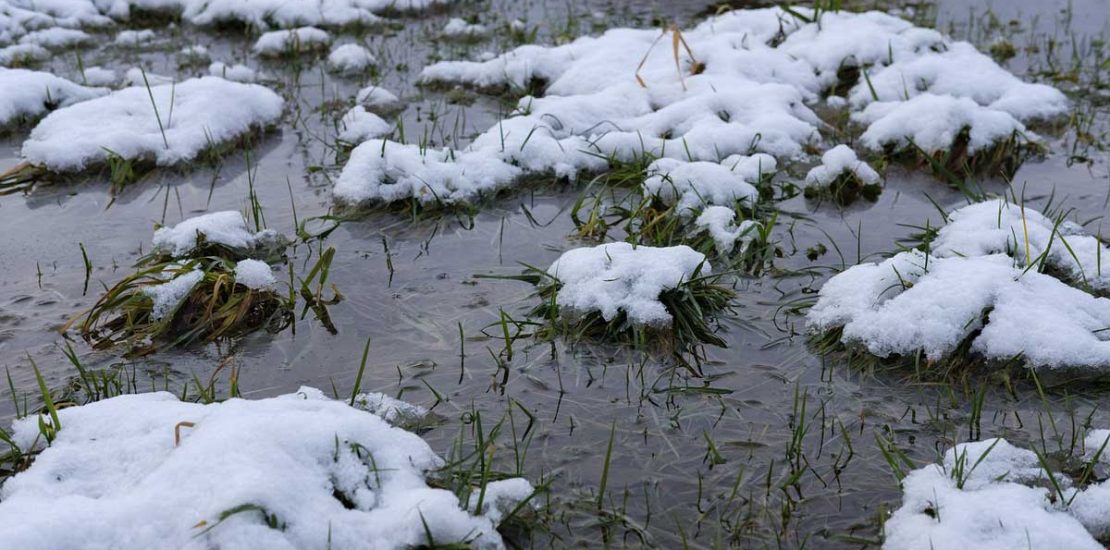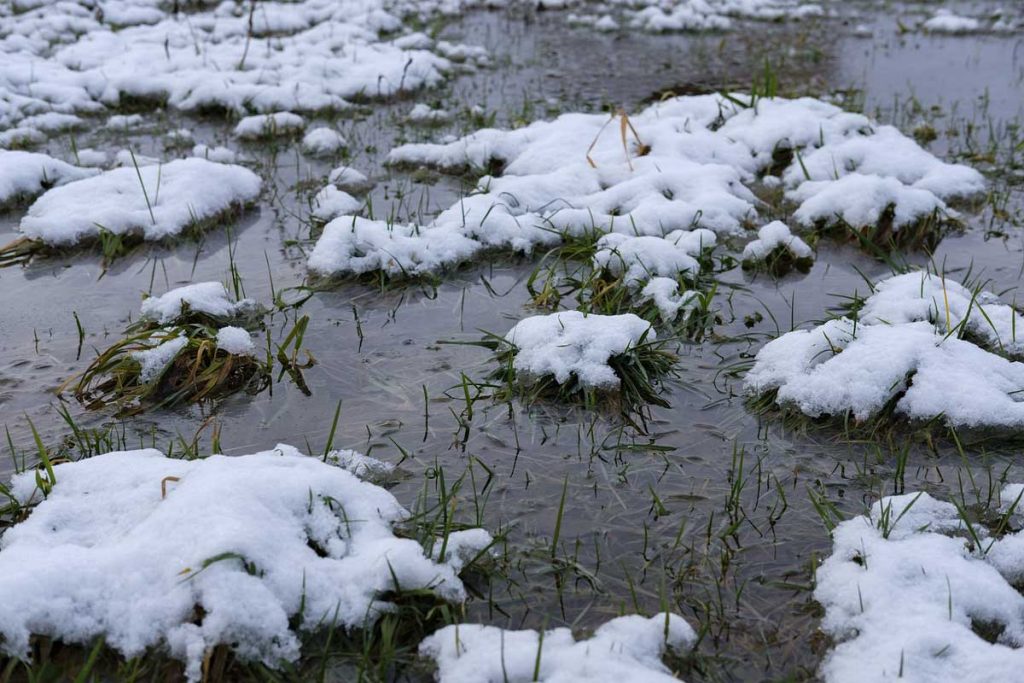
Spring Flood Risks: What You Need to Know About Snowmelt
Spring showers aren’t the only things that could potentially cause flooding. The gradual thawing out and warmer weather can also lead to snowmelt.
For most of the country, it’s the perfect transition into summer. However, for those in areas with high winter snowfall, this thawing can become a problem. With rising temperatures and hard, frozen ground, runoff from rapidly melting snow can quickly become present spring flood risks for communities.
Add to that the “spring showers” that usually accompany the rapidly warming weather, and spring can be a very dangerous time for flooding.
What is Snowmelt Flooding?
Snowmelt flooding occurs when rising temperatures begin to melt densely packed snow. Each cubic foot of snow comprises gallons of water.
When the snow melts, this water runs off across the hard, frozen winter ground, preventing the water from seeping into the land. It ends up in streams, rivers, lakes, and other bodies of water, causing the levels of those bodies of water to rapidly rise and spill over the banks.
What Makes Snowmelt Dangerous?
Snowmelt is not always dangerous, but certain environmental, geographical, and weather-related factors can turn snowmelt from a normal season occurrence into spring flood risks that could spell disaster for communities:
- Frozen Ground: During cooler springs, the ground tends to stay frozen for longer, making it more difficult for runoff to seep into the ground. This helps runoff move faster toward homes, bodies of water, etc., which accelerates flooding and increases the risk of a dangerous flood event.
- Soil Moisture: High soil moisture content before the ground freezes can increase snowmelt rates. Late fall rains that boost moisture content tend to have less time to evaporate before freezing and, as a result, that moisture is released as spring temperatures rise.• Deep Snow Cover: As previously mentioned, the deeper and more densely-packed the snow, the more water there is to melt and create flood events.
- Spring Rains: “With April showers come May Flowers…” is a beautiful notion, but sustained rain events in the spring help thaw snow cover faster and contribute to more water for flooding. These rains can cause water to spill over riverbanks and levees and should be monitored closely.
Am I in Danger?
Just a few inches of water in your home can cause thousands of dollars in damage. Spring floods can happen anywhere, so the most important thing you can do is understand your risk level.
While the gradual melting of snow is a typical occurrence that, according to the U.S. Geological Survey, accounts for up to 75 percent of the water supplies in the western US, rapid and unexpected weather changes have a greater impact on snowmelt rates, endangering more and more Americans.
For example, locations at low elevations (below 6,000 feet) tend to be very susceptible to problems related to rapid snowmelt, as increasingly rapid snowmelt in these elevations raise river levels and overwhelm banks, causing damage along the way.
What Do I Do About It?
Despite this seasonal issue that affects most Americans, many people still do not have the coverage they need in case the worst occurs. With the average NFIP claim at $44,401 in 2021, most can’t afford to pay for flood damages out of their own pocket, which makes flood insurance an attractive option.
With Mother Nature growing increasingly unpredictable, now is the time to consider your risk and contact a Wright Flood agent near you who can discuss your flood insurance options.
In addition to taking advantage of federal, excess and private flood insurance options, these tips will help you prepare your home or business to combat typical spring flood risks:
- Get out your shovel. One of the simplest ways to keep snowmelt from flooding your home is to remove excess snow from your property, especially near your home or business’ foundation and on the roof. If necessary, hire a contractor to help you with removal.
- Keep your eyes and ears on the local weather. Don’t let a spring rainstorm catch you by surprise. Pay attention to the local news for weather alerts like thunderstorm watches, flood warnings, etc. Remember, something as simple a rapid temperature increase can lead to rapid snowmelt and dangerous flooding.
- Start with the first floor. Pay special attention to the bottom floor of your home or business. Basements and first floors are more susceptible to flood damage than other areas of the home. They also typically house electrical breakers and wiring that can short-circuit if introduced to rising waters.
- Fill in the cracks. Once you’ve secured the inside of your property, inspect the outer walls and any openings (doors, windows, etc.) on the property for cracks or gaps. If you find any, seal them up with masonry caulk or cement, so they keep water out of your property.
- Turn off the power. When in doubt, turn the power off to any areas of your property that may be at risk if water levels rise and get into the house. “Hot” outlets that are introduced to water are a huge safety risk for you and your family.
For more information on how to protect your home from snowmelt floods and other spring flood risks, call (866) 373-5663 to connect with a Wright Flood agent in your area.
